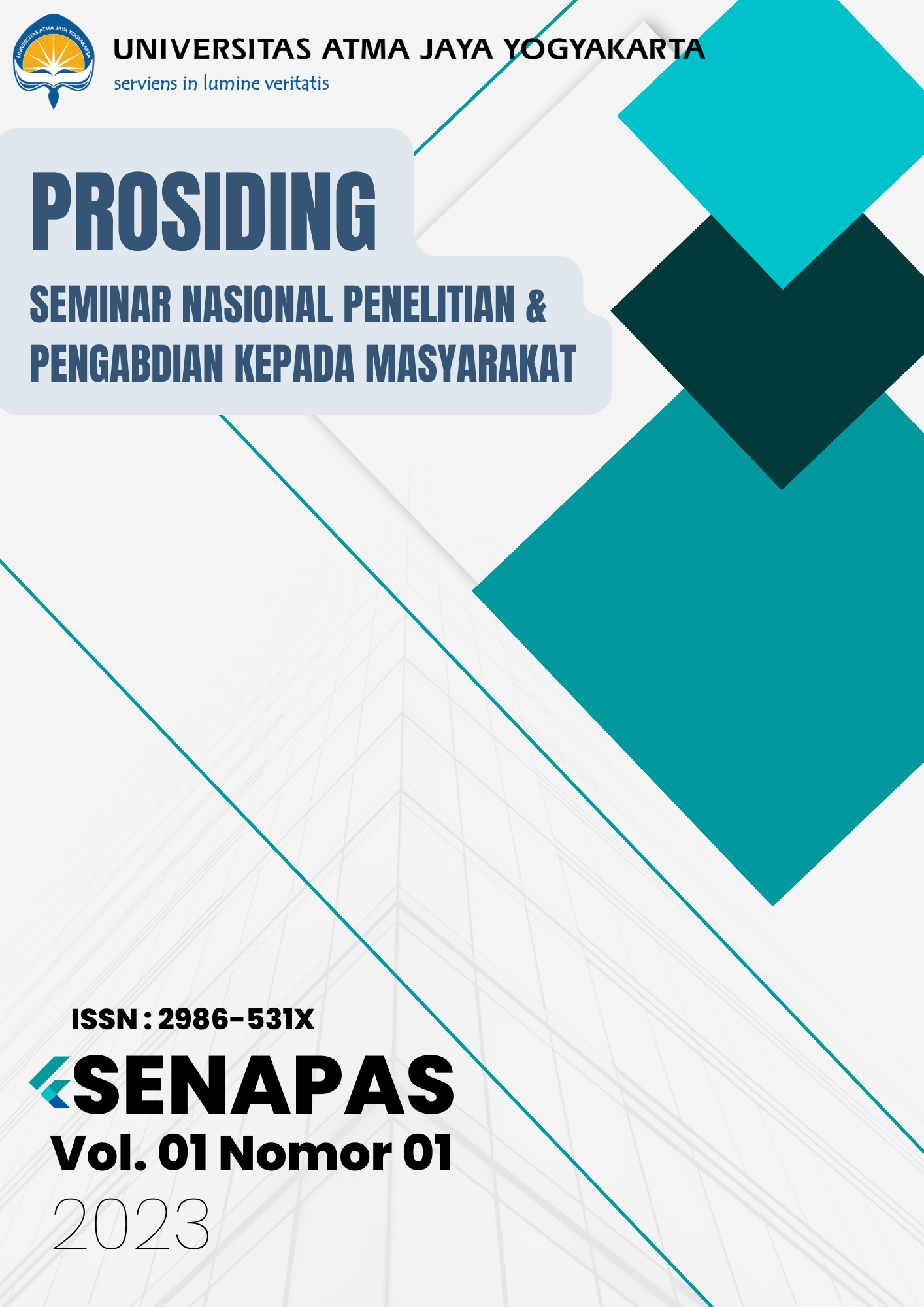Analisis Risiko Bencana Bendungan dengan Metode Valuasi Ekonomi
DOI:
https://doi.org/10.24002/senapas.v1i1.7280Keywords:
dream break, loss, risks, economic valuation, bencana bendungan, Risiko, risiko, kerugian, valuasi ekonomiAbstract
Social scientists are often working cross-collaboratively with engineers and other fields of study to predict the potential loss of social and economic values of dam break disasters. However, there are no standardized methods of economic valuation to calculate the potential loss of dam breaks. Whilst regular dam inspection is needed to ensure its safety requires a more robust method of prediction in understanding the potential loss, the lack of a standardized yet comprehensive method led to a weak prediction of loss. Consequently, the dam management was unable to plan strategically the measures to anticipate and reduce the risk of the dam break. This paper focuses on methods of economic valuation in calculating the potential loss of a dam break. It advances the steps of calculating the loss, making it beneficial for any social scientist conducting a similar study.
Ilmuwan sosial sering bekerja secara kolaboratif dengan para insinyur dan bidang studi lainnya untuk memprediksi potensi kerugian nilai sosial dan ekonomi dari bencana jebolnya bendungan. Namun, belum ada metode valuasi ekonomi yang baku namun komprehensif untuk menghitung potensi kerugian jebolnya bendungan. Sementara pemeriksaan bendungan secara teratur diperlukan untuk memastikan keamanannya membutuhkan metode prediksi yang lebih kuat dalam memahami potensi kerugian, kurangnya metode standar menyebabkan prediksi kerugian yang lemah. Akibatnya, pengelola bendungan tidak mampu merencanakan langkah strategis untuk mengantisipasi dan mengurangi risiko jebolnya bendungan. Makalah ini berfokus pada metode valuasi ekonomi dalam menghitung potensi kerugian jebolnya bendungan. Detail langkah-langkah penghitungan kerugian akan dibahas dalam makalah ini dan akan bermanfaat bagi ilmuwan sosial mana pun yang melakukan perhitungan kerugian yang serupa.
References
T. Campbell, “Nebraska’s Spencer Dam will not be rebuilt in wake of historic 2019 flood.”
J. Ennes, “After two collapses, a third Vale dam at ‘imminent risk of rupture.”
J. Hayes, “One Year After the Edenville Dam Failure.”
Ratnagiri, “Tiware Dam breach: 4 still missing as search operation enters fifth day,” [Online]. Available: https://www.indiatoday.in/india/story/tiware-dam-breach-4-still-search-operation-fifth-day-1563815-2019-07-07.
Burhanudin Mukhamad Faturahman, “Konseptualisasi mitigasi bencana melalui perspektif kebijakan publik.,” Publisa J. Adm. Publik, vol. 8, no. 55, 2018, doi: https://doi.org/10.26905/pjiap.v3i2.2365.
Ian Surya Prayoga, “Pemodelan Kerugian Bencana Banjir Akibat Curah Hujan Ekstrem Menggunakan Extreme Value Theory dan Copula.”
Muhammad Feisal Nurdin, “Estimasi nilai kerugian ekonomi akibat banjir bandang di Garut tahun 2016,” 2018.
I. Jayantara, “IMPLEMENTASI QGIS UNTUK MENGESTIMASI KERUGIAN EKONOMI AKIBAT BANJIR DI KABUPATEN BANDUNG,” J. Pendidik. Teknol. Dan Kejuru., vol. 18, no. 2, pp. 231–242, 2020, doi: https://doi.org/10.23887/jptk-undiksha.v17i2.25839.
F. Wiguna, D. Yudianto, B. M. Ginting, and A. Wicaksono, “A New Approach to Estimate the Potential Assets Loss due to Dam-Break Event in Indonesia,” J. Infrastruct. Facil. Asset Manag., vol. 4, no. 1, 2022.
“https://www.worldpop.org/.” .
G. R. Parsons, “The Travel Cost Model,” in A Primer on Nonmarket Valuation, Springer Science+Business Media New York, 2003, p. 269.
E. Commission, J. R. Centre, H. Moel, J. Huizinga, and W. Szewczyk, Global flood depth-damage functions : methodology and the database with guidelines. Publications Office, 2017.
“Ina Geoportal.” https://tanahair.indonesia.go.id/portal-web.
Neil Rotheroe Adam Richards, “Social return on investment and social enterprise: transparent accountability for sustainable development,” Soc. Enterp. J., vol. 3, no. 1, pp. 31–48, 2007, doi: http://dx.doi.org/10.1108/17508610780000720.
and D. M. Hausman, J. A., G. K. Leonard, “A Utility-Consistent, Combined Discrete Choice and Count Data Model Assessing Recreational Use Losses Due to Natural Resource Damage,” J. Public Econ., vol. 56, pp. 1–30, 1995.
Downloads
Published
Issue
Section
License
Copyright (c) 2023 Tutik Rachmawati, Stephen Sanjaya

This work is licensed under a Creative Commons Attribution-ShareAlike 4.0 International License.









